Keith Richards’ birthday is on 18 December and we want to celebrate! Together we look back on 80 years of “Keef”, his life, his influence on music, and, of course, his guitars and amps. 🎸
As a founding member of the Rolling Stones, Keith shaped the history of rock music like few other guitarists and, together with Eric Clapton and Jimi Page, is one of the last contemporary witnesses of the “British Blues Explosion”. Despite his age and the excesses of the wild 60s and 70s, “Keef” is still touring with the Stones today with unwavering enthusiasm and energy.
Keith Richards – Life and musical influences
Keith Richards was born on 18 December 1943 in Dartford (Kent) and first came into contact with music through his grandfather (a jazz guitarist). He was given his first acoustic guitar by his mother in 1959 when he enrolled at Sidecup Art College in London, but swapped it for an electric two years later. In the autumn of 1961, the legendary meeting between Keith Richards and Mick Jagger (who knew each other from childhood) took place at Kent railway station, laying the foundations for one of the most important chapters in music history. Jagger was carrying two records by Chuck Berry and Muddy Waters under his arm that day, whereupon Richards told him about his love for African-American blues, which yet had to become popular at the time. And the rest is history.
You are currently viewing a placeholder content from Giphy. To access the actual content, click the button below. Please note that doing so will share data with third-party providers.
In the following years, their shared appreciation for artists such as Willie Dixon, Buddy Holly, and Howlin’ Wolf became the artistic foundation for the Rolling Stones, whose repertoire consisted almost exclusively of blues covers until 1964.

Then, in the mid-60s, the composer duo Jagger/Richards (“The Glimmer Twins”) rose to stardom and the influence of American blues pioneers (above all Chuck Berry) characterised Keith Richard’s playing for the next six decades. “Keef” is regarded above all as a rhythm guitarist with a strong character, with influences from blues, rock, and country and a good instinct for hit-making riffs. His playing is characterised less by virtuosity than by a unique “feel” that is difficult to imitate, and Keith was rightly honoured with a place in the top 5 on Rolling Stone magazine’s list of the 100 greatest guitarists.
Keith Richards’ Gear:
Guitars:
Even though Keith Richards is associated with the Fender Telecaster more than almost any other guitarist, he started his career on other guitar models, not least because Fender guitars were hard to come by in England in the early 1960s.

In addition to a Harmony Meteor H70 and an Epiphone Casino, these included above all the 1959 Les Paul (“Keef-Burst”), which was used to record (I Can’t Get no) Satisfaction, among other songs. After his first trips to the USA, the Telecaster became his main instrument, especially the ’54 Tele called “Micawber”, which Keith modified with a humbucker in the neck position.
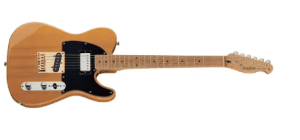
He later removed the low E string and to this day, “Micawber” is his first choice for hits such as “Brown Sugar” or “Start Me Up” in open G tuning (G-A-D-B-D). In addition to various other Teles, a Gibson Les Paul Junior (“Dice”), a Zemaitis 5-string and a Dan Armstrong See-Through are also part of the Rolling Stones’ permanent guitar arsenal for their shows, and when it comes to acoustic guitars, “Keef” has always favoured the Gibson Hummingbird.
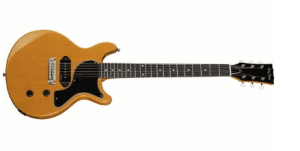
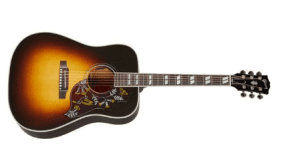
Amps:
When it came to amplification, Keith Richards relied on different amp models over the decades and was mainly seen on stage with a Fender Dual Showman and a Vox AC 30 during the 1960s.

However, his love for Fender Tweed-era amps already began back then, and in the studio, he preferred small amps such as the Fender Champ or the Fender Tweed Harvard. After increasingly using a Mesa Boogie Mark I combo throughout the 80s, Richards has sworn by Fender amps again since the 90s and currently (like Joe Bonamassa) prefers to play through Fender High Power Tweed Twins 5F8A from the late 60s.

Effects:
Keith Richards is rarely associated with guitar effects and is considered a guitarist who creates his tone primarily with his fingers. Nevertheless, Richards used a couple of tricks on the first Stones albums, especially to integrate the distortion effect into his guitar playing, which was still new at the time. In addition to the Maestro FZ-1 Fuzz Tone, this included a small Philips cassette recorder which Keith used to record acoustic guitars, play them back through the recorder’s tiny, screeching speakers, and re-recorded them (an example of this can be heard in the intro to “Street Fighting Man”).
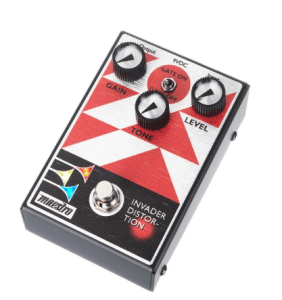
Later, Richards was also spotted with the Ibanez Tubescreamer TS9, which is still a favourite today, in front of his Fender Tweed amps.
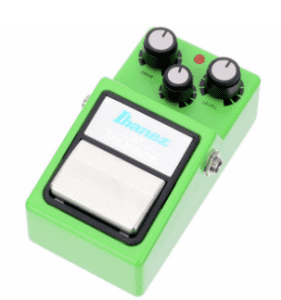
Keith Richards and The Rolling Stones – a selection of their greatest hits
A complete list of all the greatest Stones hits would certainly go beyond the scope of this article. That’s why we want to take a look at six of the most famous Stones singles from different creative periods, which are exemplary of Keith’s guitar playing and his equipment:
No single epitomises the early Stones era more than (I Can’t Get No) Satisfaction from the 1965 album “Out Of Our Heads” (US version). With the legendary opening riff (which is said to have come to him more or less in his sleep), Richards not only opens the Rolling Stones’ first self-composed worldwide hit, but also establishes the first distortion pedal in the world of electric guitars: the Maestro FZ-1.
You are currently viewing a placeholder content from YouTube. To access the actual content, click the button below. Please note that doing so will share data with third-party providers.
On Jumpin Jack Flash (released as a single in 1968), we can hear open tunings on several guitar tracks, which were to become an important part of Keith Richards’ playing. Written at a time when Keith still mostly played the Les Paul, the song embodies the raw attitude and “dirty” sound of the early Stones.
You are currently viewing a placeholder content from YouTube. To access the actual content, click the button below. Please note that doing so will share data with third-party providers.
Like no other song, Brown Sugar from the 1971 album “Sticky Fingers” stands for the combination of a 5-string Telecaster and open G tuning, which to this day is considered one of the most important constants in Keith Richards’ guitar playing.
You are currently viewing a placeholder content from YouTube. To access the actual content, click the button below. Please note that doing so will share data with third-party providers.
The song Angie from the 1973 album “Goats Head Soup” underlines “Keef’s” love for the acoustic guitar and his sense for ballads with global hit potential. His acoustic guitar of choice back then was the Gibson Hummingbird.
You are currently viewing a placeholder content from YouTube. To access the actual content, click the button below. Please note that doing so will share data with third-party providers.
In Anybody Seen My Baby from the 1997 album “Bridges to Babylon”, Keith Richards also shows his softer side with ethereal pickings and a brilliant feel for the proper amount of guitar licks and riffs for the song.
You are currently viewing a placeholder content from YouTube. To access the actual content, click the button below. Please note that doing so will share data with third-party providers.
With their 24th studio album “Hackney Diamonds” and the lead single Angry, Keith Richards and the Stones begin the 61st year of their band history and sound … like on the first day! Crisp guitar riffs in open G tuning, a snotty sound, and a catchy chorus. Keep it up, Keef!
You are currently viewing a placeholder content from YouTube. To access the actual content, click the button below. Please note that doing so will share data with third-party providers.


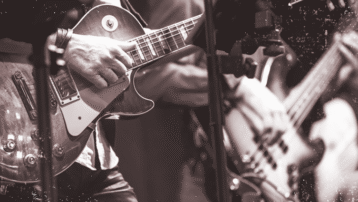













Comments 1